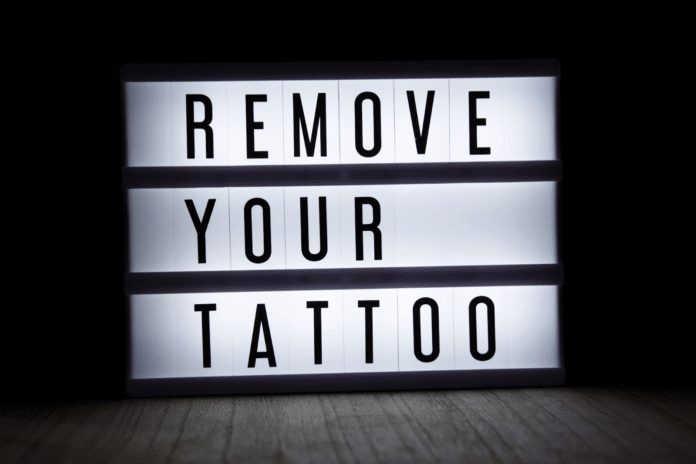
Tattoos are often a meaningful form of self-expression, but over time, personal preferences and life circumstances can change. Whether it is due to a career requirement, a change in taste, or an unwanted reminder of the past, many people seek effective ways to remove their tattoos. Fortunately, advancements in tattoo removal have made it easier than ever to fade or completely erase the unwanted ink.
Removing a tattoo requires careful planning and patience. The process varies depending on factors such as tattoo size, ink color, skin type, and the chosen removal method. Understanding the most effective techniques and how to care for your skin during removal can help you achieve the best possible results with minimal discomfort.
Understanding the Tattoo Removal Process
Tattoo removal is not an instant process. Unlike getting a tattoo, which is completed in a single session, removal requires multiple treatments over time. The type of ink used, the depth of the ink in the skin, and the body’s ability to break down and eliminate ink particles all play a role in how long the process takes.
The body naturally works to fade tattoos over time by breaking down ink particles through the immune system. However, professional removal methods accelerate this process by targeting the ink and fragmenting it into smaller particles that the body can absorb and eliminate.
While some tattoos may fade significantly with just a few treatments, others may require extensive sessions, particularly those with deep or colorful ink. Setting realistic expectations and working with a professional can help ensure successful removal.
Choosing the Best Tattoo Removal Method
There are several tattoo removal methods available, each with its own benefits and limitations. Choosing the right method depends on factors such as skin sensitivity, tattoo size, and budget.
Laser tattoo removal is the most effective and widely used method. It involves using high-intensity light beams to break down ink particles, which are then naturally removed by the body. This method works well for most tattoo colors, though lighter shades like yellow and green may take longer to fade.
Dermabrasion is another option, which involves sanding down the skin’s top layers to remove the tattoo. While this method can be effective, it is more invasive and may cause scarring or skin irritation.
For those looking for a quicker solution, surgical excision involves physically cutting out the tattooed skin and stitching the remaining skin together. This method is best suited for small tattoos but may leave a scar.
Tattoo removal creams claim to fade ink over time, but their effectiveness is limited. Most creams only affect the outer layer of skin without reaching deep-set ink particles, making them less reliable for complete removal.
Consulting with a professional can help determine the most suitable method based on individual skin type and tattoo characteristics.
Preparing for a Tattoo Removal Session
Proper preparation can improve the effectiveness of tattoo removal and minimize potential side effects. Keeping the skin healthy before treatment ensures better healing and ink absorption by the body.
Staying hydrated and maintaining a balanced diet helps support the immune system, which plays a crucial role in breaking down ink particles. Avoiding excessive sun exposure before a removal session prevents skin damage and reduces the risk of complications.
Shaving the treatment area, if necessary, allows the laser to target the tattoo more effectively. Skincare products containing retinol or exfoliating agents should be avoided in the days leading up to a session as they may cause skin irritation.
Understanding what to expect before a session ensures a smoother experience and optimal results.
Managing Discomfort During Tattoo Removal
Tattoo removal can cause some discomfort, similar to the feeling of getting a tattoo. However, pain levels vary depending on individual tolerance, tattoo placement, and removal method.
Laser removal often feels like a series of small rubber band snaps against the skin. To reduce discomfort, numbing creams can be applied before treatment. Cooling devices are also used during sessions to soothe the skin and minimize pain.
For those with low pain tolerance, discussing options with a specialist can help find ways to make the process more comfortable.
Alternatives to Professional Tattoo Removal
For those who prefer non-invasive alternatives, certain lifestyle choices and at-home remedies may help fade tattoos gradually.
Exfoliation with natural ingredients such as lemon juice and baking soda can lighten a tattoo over time, though results are not guaranteed. Chemical peels may also assist in breaking down ink but should be performed by a professional to avoid skin damage.
Cover-up tattoos are another option, allowing individuals to replace an unwanted tattoo with a new design. Skilled tattoo artists can incorporate existing ink into a fresh design, effectively concealing the original tattoo. While at-home methods may offer minor fading, professional removal remains the most effective way to erase unwanted ink completely. That way, you’ll be sure the removal process will be done properly.
Tattoo removal is a personal decision that requires careful consideration. Choosing the right removal method, preparing properly, and following post-treatment care all contribute to successful results.
By understanding the different removal techniques, managing expectations, and prioritizing skin health, individuals can achieve the best possible outcome in their tattoo removal journey. With patience and professional guidance, removing a tattoo can be a smooth and effective process.




